Formulas in Notion have always been a cornerstone feature for dynamic database solutions. With the release of the new formula update, they've undergone a major transformation both visually and functionally.
In this blog post, we'll explore the new features and show you how to harness its full potential.
New data types
List
A game-changer for Notion, the introduction of lists within formulas allows for more refined and complex outputs. Moving away from single data points, users now have the opportunity to tap into advanced data structures.
The Relation property is considered a list, which means you can use any of the following methods (map, filter, some) to manipulate the output.
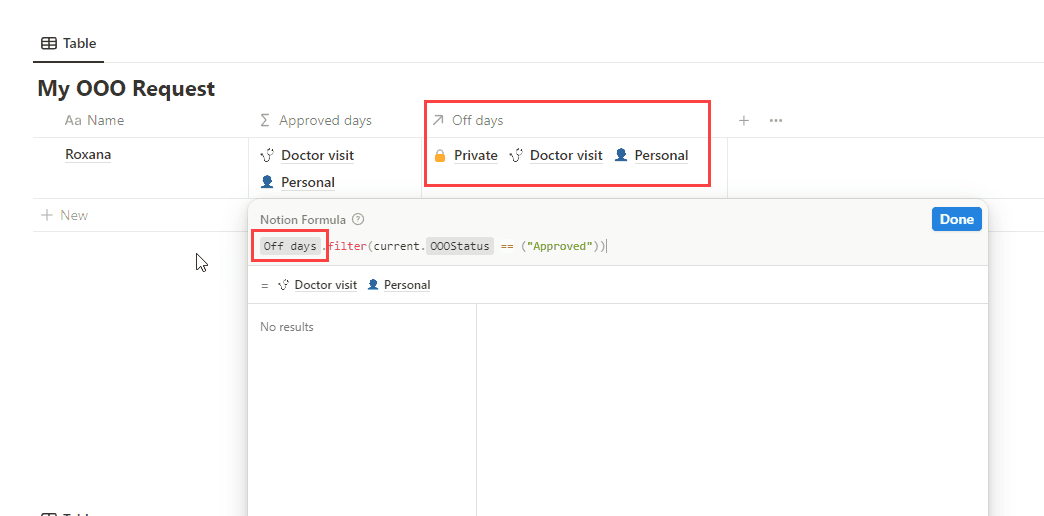
Rich Data Outputs
Formulas can now process data tied to Pages, Blocks, and People, so instead of returning basic strings or numbers, they can now return complex objects or references linked directly to these Notion elements.

Formulas can now output related pages
People Property
The People property has expanded to give you access to workspace-level information such as emails and full names.
New Syntax
Multi-Line Formulas
In the past, anyone working with Notion's formulas would often find themselves navigating through lengthy, continuous lines of code, which was tedious and prone to oversight. However, with the new addition of multi-line editing, that's a thing of the past.
This new feature allows users to clearly view each segment of a formula as if they were individual building blocks. It becomes a lot easier to discern and understand how each part interacts with the others. As a result, identifying relationships between different formula segments is now straightforward, leading to more efficient troubleshooting and refinement of your databases.

Press Shift + Enter break to new line.
Error Highlight
Sifting through code to identify issues can be time-consuming and often frustrating. However, with the latest improvements, when you make a syntax error or introduce a logical flaw, the system will catch it. These mistakes are flagged, directing your attention precisely to where the issues lie. This approach not only saves time but ensures that each formula is correct in terms of its accuracy and functionality.
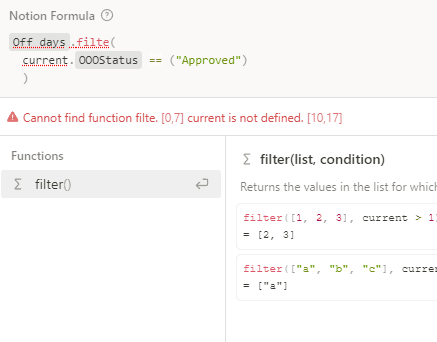
Styling outputs
Previously, while data could be informative, it often lacked a personal touch or visual flair. The introduction of the style function has changed the game. This feature offers users the ability to convey information and does so in a manner tailored to their aesthetic preferences. By allowing formulas to be dressed up, Notion ensures that the data isn't just absorbed but also admired. Now, users can take their databases from merely informative tables to visually engaging masterpieces, merging substance with style in a previously unattainable way.
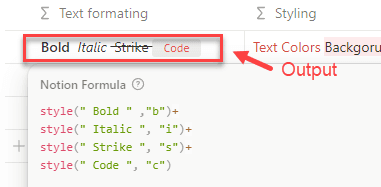
Ability to format formula output style
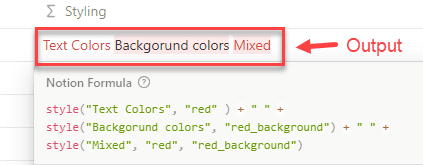
More output examples
Variables
The addition of the let function marks a pivotal turning point in how we understand and work with formulas on the platform. While it may appear as just another function at first glance, its features run deep. The let function paves the way for users to craft formulas more dynamically and intricately, providing tools that previously weren't within reach. By bridging gaps and offering more robust solutions, this function is set to redefine the boundaries of what's possible with formula-based operations in Notion. It's not just an addition; it's an evolution, positioning Notion users at the forefront of database creativity and efficiency.
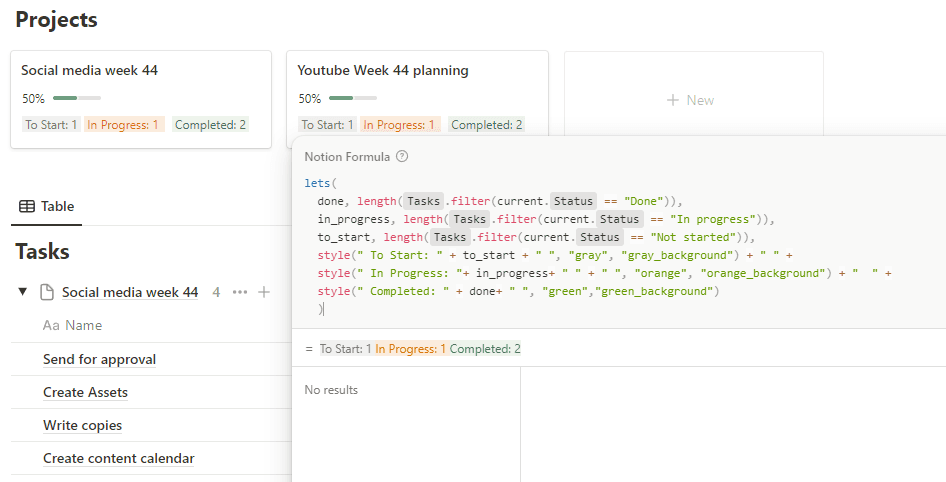
Examples
Project Management
The new let is a game-changer for formula enthusiasts. For example, users can now aggregate data from relations, enriching linked database properties with deeper insights and more comprehensive information than ever before. As seen below, you can now provide more information about the different statuses of a “Relation Property” by providing surface-level details on the related content.

Alerting for blocked tasks (based on subtasks)
For those who utilize a more hierarchical structure in their databases, especially with a "Sub-item" setup, you're in for a treat. There are scenarios where tasks might be interdependent, and knowing the status of sub-tasks becomes essential. Instead of manually digging through each sub-item to check its status, Notion provides a smarter solution. By crafting a specialized formula, you can effortlessly pinpoint any current task held up by a "Sub-item" yet to reach its "Done/Completed" status. This real-time highlight acts as an intuitive flag, ensuring that you're always informed and can address any bottlenecks promptly. It’s a blend of convenience and functionality, transforming how you manage and oversee tasks within your database.

Ready to elevate your team proficiency with Notion? Our team of Notion certified consultants are ready to guide you through the intricacies of Notion's latest formula features. We'll tailor our discussion to your unique needs and goals, ensuring you get the most out of this powerful tool.


